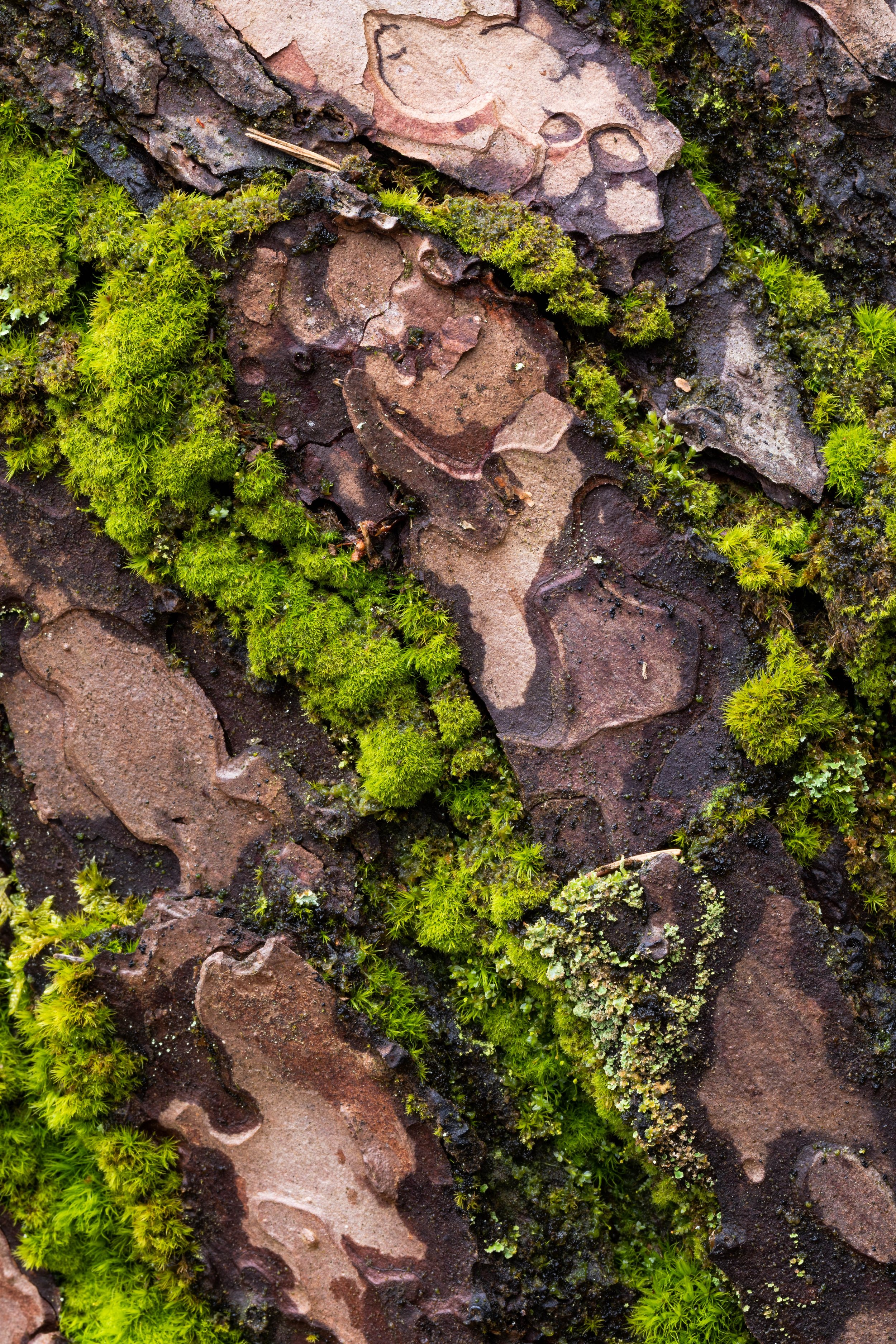Be a nature detective. On your next hike, see if you can identify lichen versus moss.
This can be tricky. Some types of lichen and moss look similar. They can even grow on the same rock or tree. To confuse matters further, some lichens are called mosses, like reindeer moss and caribou moss. Spanish moss is neither a lichen nor a moss but a flowering plant called a bromeliad.
Use these simple clues to solve the mystery: Is it lichen or is it moss?
Moss or lichen?
Lichen-Photo by Jacob Copus on Unsplash
Moss or lichen?
Tionesta, Allegheny National Forest-by IvoShandor (CC-wikimedia)
Lichens are not a plant, while mosses are. Lichen is a fungi and algae sisterhood. Thus, mosses will have leaves and stems (sometimes very tiny ones). Lichens will not.
Mosses only grow in wet or moist, dark habitats, like on a rock in a stream or a tree in a damp forest. Lichen can survive in a variety of habitats, in full sunlight and damp places and even in the frozen tundra. It can also grow on manmade structures like metal poles and fences.
Lichen has a lot of different looks but is usually a dull, flat, leafy, crusty growth or, sometimes on trees, grows like dry shrub.
Moss is typically soft and looks like a green mat that you might place on your porch.
Lichen tends to appear on unhealthy or dying trees. It’s rarely seen on healthy, fast-growing trees.
Lichen is actually quite amazing! Here are some fun facts about lichen that I lichen a lot.
This photo actually shows both moss and lichen. Which is which?
Photo by Pascal Meier on Unsplash
The fungi and algae in lichens live in a mutualistic symbiotic relationship. That means they live together and benefit from each other. Algae provides a food source for the fungi. Fungi provide algae with some water and nutrients and a sturdy, protected home. A match made in heaven!
Many people think Lichen kills trees, but it doesn’t hurt them at all. Lichen is self-sustaining, taking what it needs from air and rain.
Over 6% of the earth’s surface is estimated to be covered by lichens. There are over 20,000 different kinds in a variety of colors and shapes. They are found on every continent.
Lichen is usually the first type of organism to appear after a natural disaster, such as a fire. It can survive when plants can’t.
Scientists use lichen as a natural air quality indicator. It only thrives when the air quality is clean, because it absorbs everything in the environment around it. It actually helps clean our air by converting carbon dioxide to oxygen and absorbing any pollutants in the area.
Lichen has many uses! Very colorful lichen can be used for dyes for clothing. It can be used for antibiotic uses. You might even find it as an ingredient in your deodorant or toothpaste. Smooth rock tripe lichen can be boiled, cleaned and roasted as a nutritious potato-chip-like food. Several Native American tribes eat hanging tree lichens as a traditional food.
Lots of animals like lichen. Deer use it as a food source, frogs enjoy it as a snack, and birds like hummingbirds use it in their nests.
The oldest lichen on the planet, the map lichen (Rhizocarpus geographicum) in the artic, is 8,600 years old, by far the oldest living organisms on the planet.
Lichen first appeared on the earth 250 million years ago.
Hiking can be more than just exercise in a lovely environment. It can also be a chance to explore, increase your powers of observation, exercise your senses, use your imagination, and renew your your sense of wonder. I’m happy to share more ways if people would like.
Spanish Moss. Not Moss or lichen.
Photo by Jaël Vallée on Unsplash
But for now, a couple Dad jokes about moss and lichen!
Q: Where do Russian cows go to gather moss?
A: Moscow.
I made a video about the symbiotic relationships between fungus and algae
Don't forget to lichen subscribe!
Happy hiking and nature detective work!
Lichen can be very colorful.
Photo by Patrick Hendry on Unsplash




